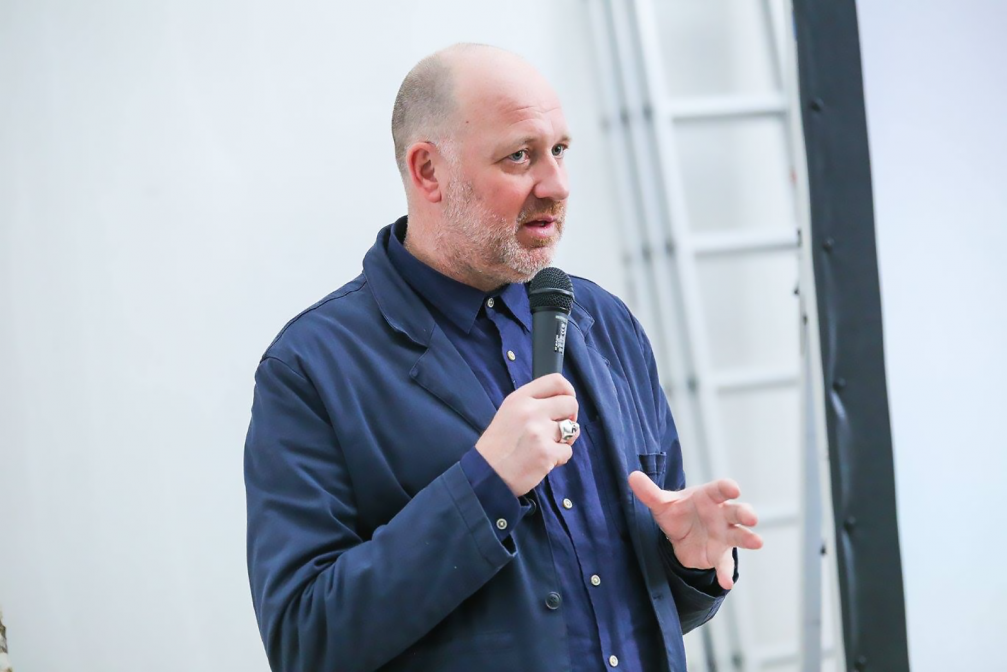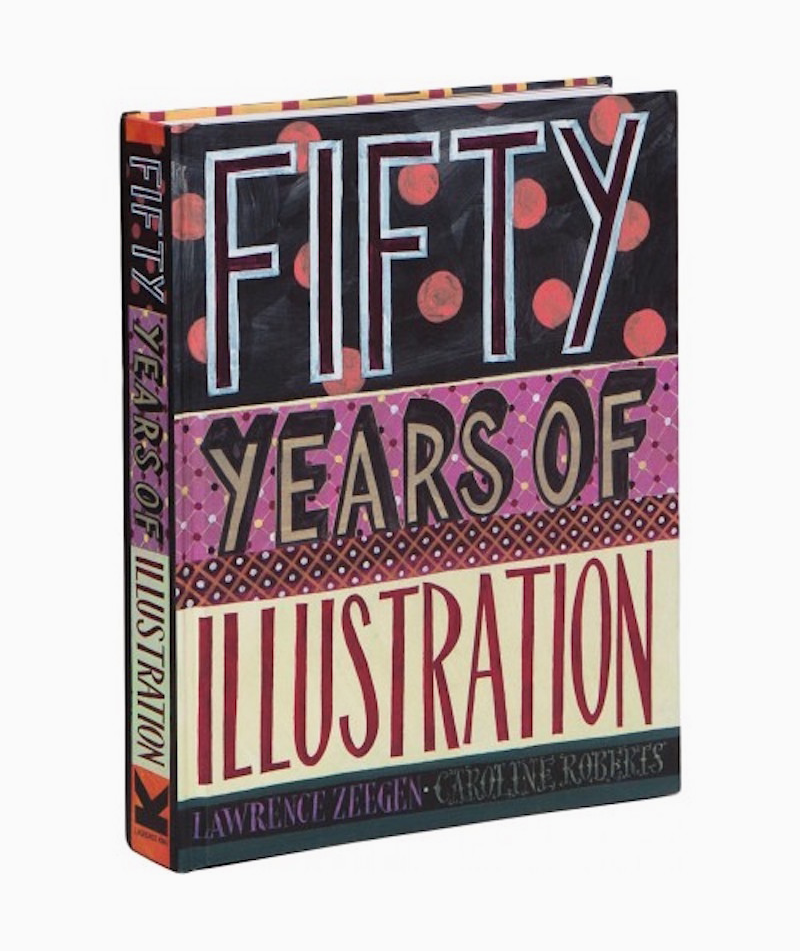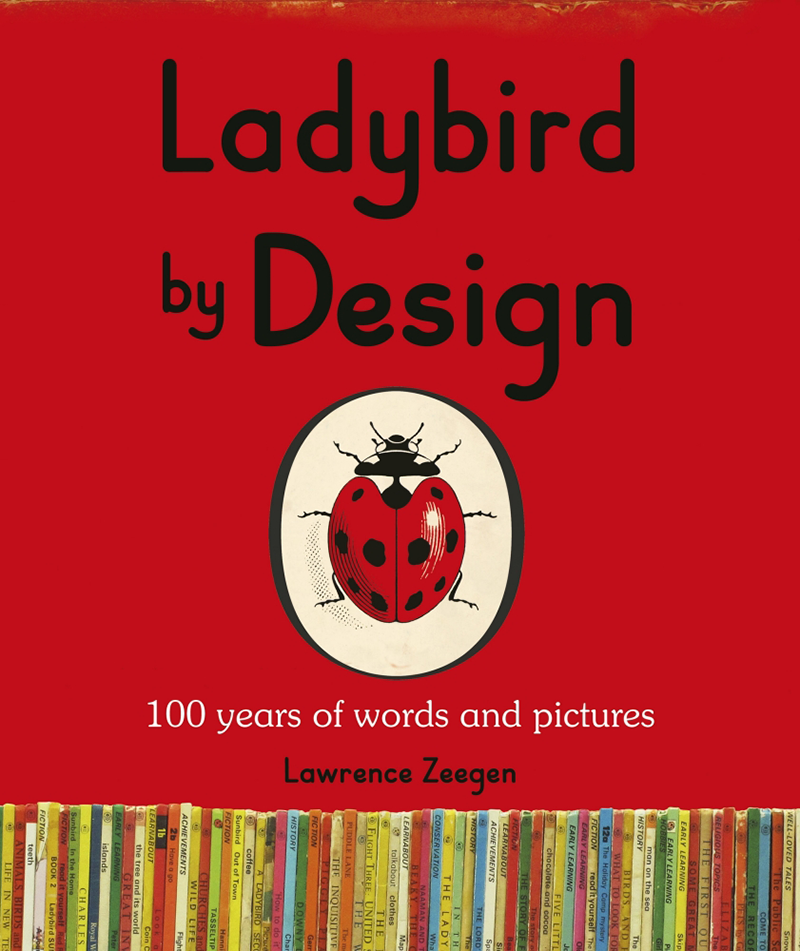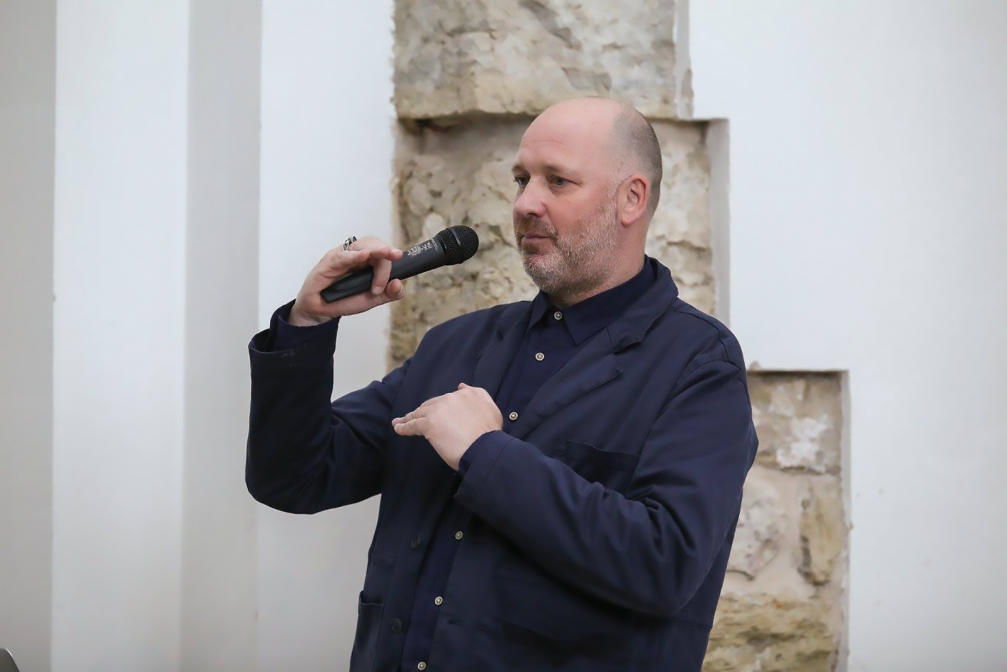
Last year, by an invitation of Latvian Art Directors Club, Lawrence Zeegen gave a lecture in Riga. Zeegen is a well–known educator, illustrator and writer. Currently, he is Professor of Illustration and Dean of Design at Ravensbourne University, and before that, he has worked in several other universities. Zeegen is very active in the field of illustration with many renowned newspapers, magazines, book publishers, design companies and advertising agencies among his clients. He is a member of several design institutions, and he shares his knowledge in talks all over the world.
You were Vice President of Icograda, an organisation that oversees graphic design associations from around the world. It’s not very well known in Latvia, and I don’t think we have any member organisations there. Could you tell us about the work of Icograda?
Icograda was formed 52 years ago in London, also the main membership consisted of the organisations in the UK, the US and some European countries. Relatively quickly other countries came on board. Long story short, in the 90s it moved from London to Montréal. Icograda’s life was about linking graphic design organisations together to give them a platform to share ideas about design, to network, collaborate, share approaches and influencing policies in each country.
Then and even today some countries are far more ahead in terms of their understanding of design. The UK and US as well would probably be prime examples as to what graphic design, design generally and creative industries contribute to the economy.
As boundaries between design disciplines started to merge or fall away with the advent of the digital, and the fact that so many designers can work across disciplines, Icograda needed to take a long, hard look at itself and decide what it is going to be in the 21st century. Overnight the board agreed to change Icograda to ico–D, an international council of design associations.
Why did you get involved in this organisation, and what did you try to achieve?
I was a student in London when Icograda was very big there. One of the things that I found very beneficial was that it could actually present what was happening in graphic design to student audience. If you can imagine the world prior to computers, mobile phones, the internet, prior to the Design Museum, design press and publishers, there was very little out there. In order to see what was happening in design you had to work very hard to find something, there was no one click on It’s Nice That.
Actually, one of the things that I introduced to Brighton was sessions with external speakers coming in. They were probably stolen from those Icograda used to run. They would do 2–4 days of lectures in a cinema in Central London. And I would go there along with hundreds of other students from all over the country. We were motivated and really keen.
I got involved because in a way it had an impact on my education, and I wanted to be part of something that I found very important. But also, it had been very important in London, and when it left for Montreal, it was kind of forgotten to some extent.
So, I tried to bring Icograda home to London every now and again. We had an exhibition of posters at the London College of Communication. They were selected from the Icograda’s amazing archive by contemporary designers who talked about how Icograda influenced their understanding of design. People like Anthony Barrow, Hamish Makgill got involved, a whole bunch of designers that I respected. For me, it was important that there was this bridge between the history of graphic design and the future of graphic design.
I was the Vice President for two terms of four years during the period of change. Unfortunately, during that time a lot of what started as well–funded projects just couldn’t generate support. Some projects had to be put aside while ico–D decided on its priorities.

What would you say is the best way to impact government policy for design?
This was a part of the conversation recently when I participated in a round table discussion with Michael Wolff, Sebastian Conran, Lynda Relph–Knight, who was the editor of Design Week for 22 years, David Kester, who was the CEO of Design Council, Ben Terrett who designed gov.uk. Ben was very vocal and gave clear examples of why the gov.uk project worked and how they got the sign–off.
As designers, we couldn’t spend too long getting rather excited about the quality of the paper, new typeface or about commissioning great photographer or illustrator. We can get wrapped up in the production because we are seduced by the aesthetics.
Design has to communicate but we also want design to be joyful, beautiful and to feed our soul. Politicians aren’t interested in that. We don’t work or think in the same ways.
Ben gave a great example. When he went to see one of the ministers to present the gov.uk, he realised how powerful the minister was. If this guy said: «I don’t want it in black and white, I want it in blue and white», for whatever reason it has to be produced in blue and white. The guy knew nothing about design, but he knew that decision was his. Ben talked about how he needed to connect with that person, how he needed to demonstrate that as a designer he could be trusted. I think it all comes down to trust, it’s about relationships and mutual respect.
Ben said: «We’ve done some homework, we’ve done our figures on this». He explained that their solution would save the government money. And that was the thing the government minister was interested in. That sounds a little crass to present to a politician in terms of pounds and shillings, but it’s actually what makes the world go round. Whilst we get excited about paper and typefaces, ministers don’t. They get excited about «O.K. if we go with this, we can save money and benefit the society».
We had a government minister from Indonesia who came to one of ico–D’s meetings, who was interested in understanding general design principles. I was amazed at first, I thought — he has made the effort to come to design organisation to understand how to better commission and use design. Turns out, in «previous life» he was a designer, he just decided to go into politics. It’s perfect. Most designers do not want to be politicians. We can’t rely upon that. I would argue that the simplest thing is to have a human connection to people that commission design.Politicians are not interested in picking blue over green because they don’t have the training. They don’t want to be given that sort of responsibility. They just want to know that the design is going to work for them.
Politicians are not interested in picking blue over green because they don’t have the training. They don’t want to be given that sort of responsibility. They just want to know that the design is going to work for them.
At least in Latvia, the price often is one of the factors of judgment in government’s commissions, that is why some good designers don’t ever work with the government…
About 6–7 years ago I did a project in Belgrade, Serbia, which was supported by USAID. Serbia was losing a lot of designers to the UK and US. A generation that didn’t want to stay in Belgrade, and those who did only wanted to work for hip clubs, music festivals or certain brands or they went for the big money at ad agencies. They weren’t interested, for example, in designing packaging for products that were produced in Serbia. Serbian farmers and Serbian companies were producing chutneys, pickles and jams, fantastic products, but they were horribly packaged. USA recognised that if it supported a better link between designer and producer and helped to create the kind of packaging that reflected how good the products were, there was an export market opportunity. But they couldn’t make the connection between local Serbian graphic designers and Serbian farmers. The farmers were used to going to their nephew who had a PC in his bedroom and could knock out the packaging for the lowest price.
So, USAID spent its money on providing grants for designers to collaborate and work with the food producers. My job was to work in the middle by bringing together Serbian farmers who didn’t care about design but wanted to sell more products, and designers who didn’t care about the jam but wanted to do some cool graphics. There was money in it for both sides. I found that the best way was to bring them all together, present a lecture showing examples of great packaging design. And again it goes back to some kind of trust and communication. I acted as a kind of creative director. So, when some young Serbian designer was ignoring the client and just trying to do something cool with their portfolio, I reigned it back and said — remember what this is, and go taste the product again.


You have been on the Design Council’s Sounding board in the UK. As I’m on the Latvian Design Council’s board, it would be interesting for me to hear about your experience and what you’re working on.
The Design Council Sounding board is a very informal arrangement. It’s not the same as being a trustee for the Design Council or being on its board. It is a group of people meeting on a regular basis and that can have an impact on Design Council’s thinking. What happens is once a month we will all meet, the Design Council will test the ideas and test thinking with us, and bring us up to speed with some of its initiatives, it will ask for feedback. Sounding board is a diverse group, so I think I’m probably one of two people that come from design education background. There are people from architecture, communication design, branding, engineering… We meet for 2–3 hours, with a bottle of cold beer, with lots of conversations, often lots of presentations as well. Everyone can make any suggestion, and it won’t be considered silly or ridiculous.Design Council in the UK is an organisation that raises passions in people. Design Council needs to be the go–to place where the media can get
Design Council in the UK is an organisation that raises passions in people. Design Council needs to be the go–to place where the media can get response on things that are happening in design. It certainly has been more vocal than it would have been ten years ago with regards to teaching creative subjects in schools, for example. And it’s actually been very focused on providing opportunities for young designers to have an impact in society.
There’s a project that Design Council runs called Knee High Design Challenge. It is about encouraging ideas that will improve the lives of children under five years old. You don’t need to be a designer to have an idea. If it is seen to be a good one, you could be paired with a group of designers that can make the idea happen. There are projects in communication design, interior architecture that often are kind of service design in nature — it’s about the ways in which kids in difficult circumstances connect with the world.
I’m giving this example because the Design Council Sounding board was the first place where that idea came to for discussion about how it might work. The Sounding board gives the opportunity to meet other designers and to influence the way Design Council is thinking, but without having to make a major commitment to being on the board.
In the age of «global village», the big hubs like London, New York or Stockholm tend to attract clients from all over the world. What is the strategy for a small country, how can we export our design?
I can give a very small example, but maybe you can draw some parallels from that. It goes back to Belgrade because I was not only working with designers and farmers but also with their University of Arts to try to impact their curriculum, which had not been changed in decades. I was talking with them about the importance of refreshing and updating the curriculum. If they only teach in the way Serbian designers have always been taught, there won’t be that correlation for a new graduate to be able to work in London or New York. Because they have a kind of Serbian approach to communication design. I don’t mean that disparagingly, I mean that in many ways they are taught by one tutor, their master who they have to please. That just isn’t the case in the UK. Through conversations with some of the students, I realised that more forward–thinking was not in the graphic design but in illustration. Young illustrators there were actually hugely talented, they really could draw and answer the brief, but there was no market for illustration in Serbia. They asked — how do we make this work? Well, you’ve got to work. The technology is here for you to sit in a studio in Belgrade and work for any client anywhere you like in the world. The market is there. This got them thinking and one or two of them quite quickly got agents and realised that actually you could be reasonably wealthy working as an illustrator in Belgrade on London or New York rates.
When it comes to design and the entire country’s thinking about where it fits in, it’s not right to suggest that smaller countries should service the needs of design studios elsewhere. But I wonder what potential there is for studios in places like Latvia to partner with larger design studios…
I think there is a need for partnering, because with design, maybe unlike illustration, the client wants to meet you in person. I remember, Colophon Foundry told me that their clients thought that even Brighton is too far, so they moved to London…
It’s true. I know studios in Manchester, they do great work, have great clients, but somehow they are just not taken quite seriously as those companies that are working in London. Also, there is this sense that if you are making it work in London, you are tough enough to make it work anywhere. If you are making it work in Manchester or Brighton, could you really make it work in London?


You mentioned Serbian design. There is a discussion in Latvia as well — do we have a Latvian style of design and should we develop it to make ourselves very specific or should we have a more global voice. What is your opinion on this kind of discussion?
If an approach to being international was going for the lowest common denominator we would all end up with very bland design, with design that doesn’t reflect its origins or all the sensibilities of the people.
What I wouldn’t want smaller design communities like the one in Latvia to do, is to try not to replicate but to try to produce the kind of design that strips away its character or its essence. I think that’s where the strength has to be. I worry a little about the responsibility as a design educator. For example, the number of Chinese students that come to London to study… Design education has to understand how it embraces a range of cultures and take into account those differences when teaching design.
It’s easy to argue that people come to London to get tapped into London’s design community and approach to design. But I think intelligent designers don’t lose the sight of their history and culture, their own part of Europe or Asia.




Viedokļi